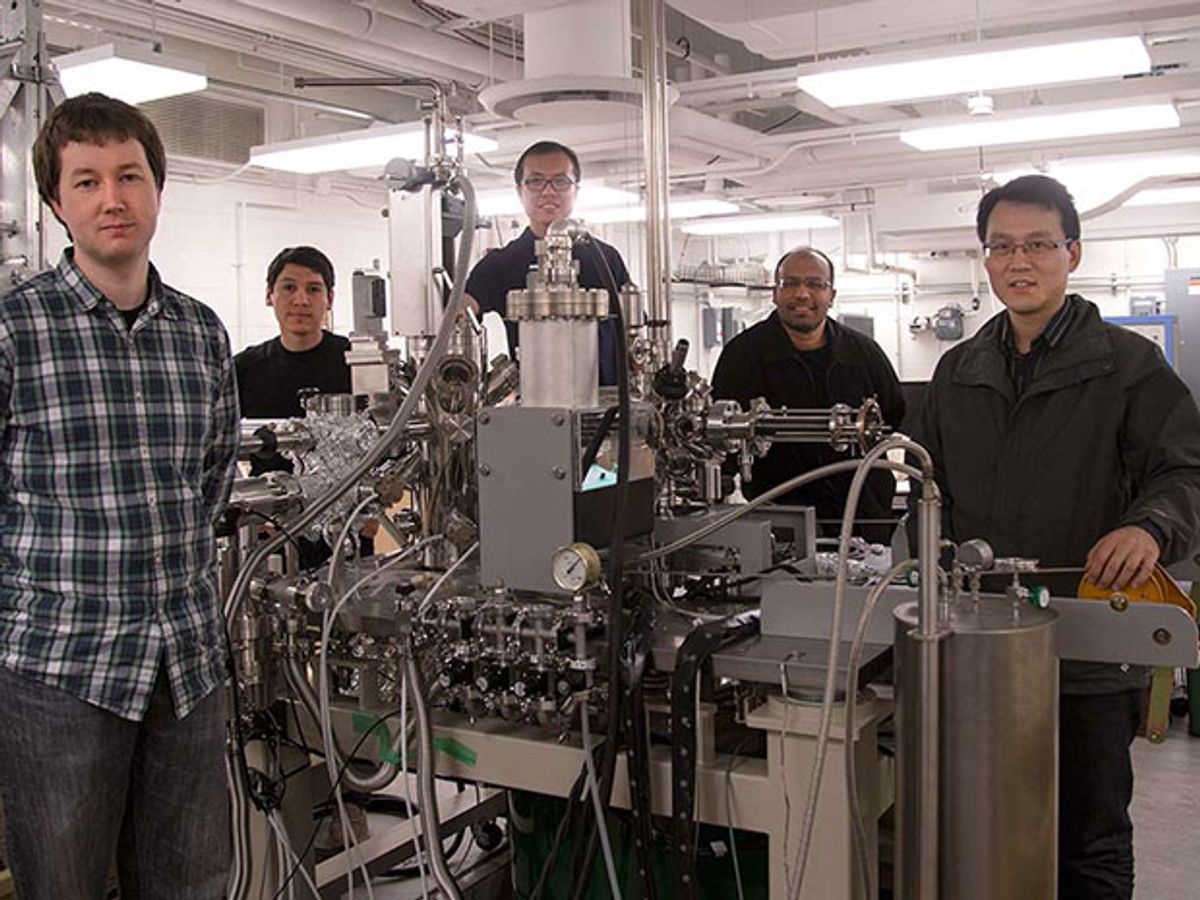After an 85-year hunt, scientists have detected an exotic particle, the “Weyl fermion,” which they suggest could lead to faster and more efficient electronics and to new types of quantum computing.
Electrons, protons, and neutrons belong to a class of particles known as fermions. Unlike the other major class of particles, the bosons, which include photons, fermions can collide with each other—no two fermions can share the same state at the same position at the same time.
Whereas electrons and all the other known fermions have mass, in 1929, mathematician and physicist Hermann Weyl theorized that massless fermions that carry electric charge could exist, so-called Weyl fermions. “Weyl fermions are basic building blocks; you can combine two Weyl fermions to make an electron,” says condensed matter physicist Zahid Hasan at Princeton University.
The fact that Weyl fermions have no mass suggests they could shuffle electric charge along inside electronics far more quickly than electrons can. Another potentially useful quality of Weyl fermions is that they cannot move backward—instead of bouncing away from obstacles, they zip through or around roadblocks. In contrast, electrons can scatter backward when they collide with obstructions, hindering the efficiency of their flow and generating heat.
“Weyl fermions could be used to solve the traffic jams that you get with electrons in electronics—they can move in a much more efficient, ordered way than electrons,” Hasan says. “They could lead to a new type of electronics we call ‘Weyltronics.’”
For decades, physicists thought that subatomic particles called neutrinos were Weyl fermions. However, in 1998, scientists discovered neutrinos do have mass. (Their antimatter equivalent, the antineutrino could be a key technology in ensuring Iran’s compliance in this week’s nuclear deal.)
Now, after 85 years, scientists have finally detected Weyl fermions within in large crystals of tantalum arsenide. They detailed their findings this week online in the journal Science.
Particles such as the famous Higgs boson are often detected in the aftermath of high-energy particle collisions, but in a study published in June the researchers theorized that Weyl fermions could exist in certain crystals known as “Weyl semimetals,” which can essentially split electrons inside into pairs of Weyl fermions that move in opposite directions, Hasan says.
The researchers noted these Weyl fermions are not freestanding particles. Instead, they are quasiparticles that can only exist within those crystals. In other words, they are electronic activity that behaves as if they were particles in free space. By shining beams of ultraviolet light and X-rays at these crystals, the researchers detected the telltale effects of Weyl fermions on those beams.
“These results are very exciting for me personally, since I've been involved significantly in the theoretical discovery of Weyl semimetals a few years ago,” says physicist Anton Burkov at the University of Waterloo, who did not take part in this research. “It’s very exciting to finally see them discovered experimentally in real materials.”
The way that Weyl fermions are constrained from moving backwards is similar to how electrons behave in exotic materials called topological insulators. Such constraints can help current flow highly efficiently; Hasan says that electricity in these crystals can (theoretically) move at least twice as fast as it does in graphene and 1,000 times faster than in conventional semiconductors, “and the crystals can be improved to do even better.” The upshot could be faster electronics that consume less energy. “Power consumption and associated heating is what currently limits a further increase in processor speed in our computers,” Burkov says.
In addition, Weyl fermions could also lead to new kinds of quantum computers that are more resistant to disruption. Quantum computers rely on states known as superpositions, in which a bit can essentially represent both one and zero at the same time. Superpositions offer the chance to solve previously intractable problems, but they are notoriously prone to collapsing if they interact with the environment. The fact that Weyl fermions are less prone to interacting with their surroundings could lead to new ways of encoding quantum information, Hasan says.
The researchers are now investigating other materials in which Weyl fermions could exist. “We’ve found a niobium-based material, and a silicon-based crystal,” Hasan says.
Charles Q. Choi is a science reporter who contributes regularly to IEEE Spectrum. He has written for Scientific American, The New York Times, Wired, and Science, among others.



